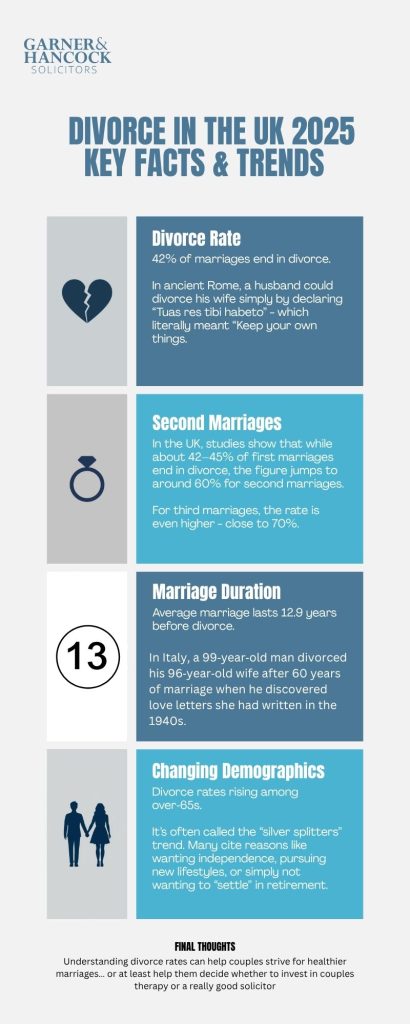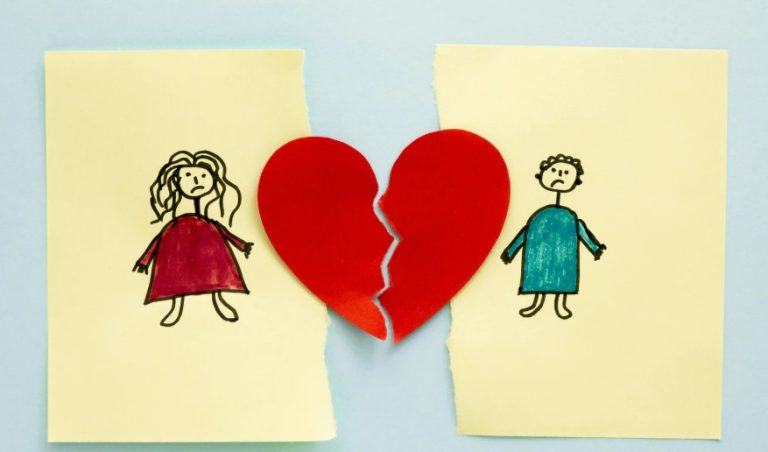Divorce in the UK 2025: Key Facts, Trends & Quirky Insights
Divorce is one of the most significant life events a couple can face, and the way it’s understood has shifted dramatically over time. From ancient customs to modern no‑fault laws, the story of divorce is as much about society as it is about relationships. Here’s a look at the latest UK divorce statistics, alongside some surprising and even quirky facts.
The Impact of No‑Fault Divorce
The introduction of no‑fault divorce in April 2022 reshaped the process. Couples no longer need to assign blame, and a mandatory 20‑week reflection period was introduced. While this initially slowed down the number of completed divorces, it has also encouraged a more constructive approach to separation.
The Rise of the “Silver Splitters”
One of the most striking trends is the increase in divorces among those over 65. Dubbed the “silver splitters”, many older couples are choosing independence and new lifestyles in retirement. With longer life expectancy and reduced stigma, more people are deciding it’s never too late to start fresh.
Second (and Third) Marriages
- About 60% of second marriages end in divorce, compared to 42–45% of first marriages.
- For third marriages, the rate rises to nearly 70%. Blended families, financial pressures, and the reduced stigma of divorce all play a role. Yet, many second marriages thrive when couples enter with clearer expectations and stronger communication.
Final Thoughts
Understanding divorce rates isn’t just about numbers, it’s about recognising the social, cultural, and personal factors that shape relationships. While statistics show that many marriages do end, they also highlight resilience: most couples stay together, and those who part often find new beginnings.








